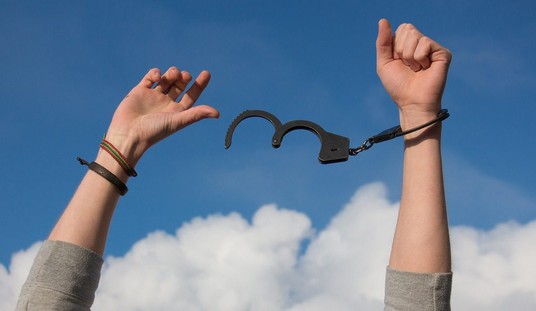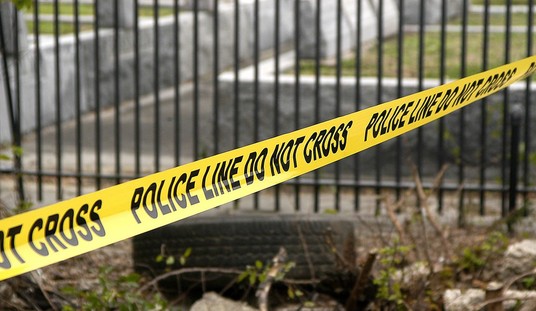[Second in a three part series, where Cork Graham responds to critics and discusses his combat experience in Central America in the 1980s.–editor]
A shooting lesson
Here’s a quick shooting lesson, because, when this photo in question was taken, I was doing just that with my, not the guy taking the photo’s, my, M16A1: giving lessons.

A longer barrel improves the tracking on a running target. Even the average deer hunter practiced in taking moving game, or a goose hunter with a long-barreled shotgun shooting at passing geese, knows this.
The regular length M16 is a viable sniping weapon when used in certain environments, and often more readily at hand than the sniper-dedicated M14 with ART scope that was what the Salvadoran military was issuing its military. This understanding of how viable an M16 is as a tactical shooting weapon is something that the Army finally took to heart with the designated marksman (SDM): a sniper quality shooter without all the rest of the training a fully designated sniper receives.
Carrying that M16 on this specific operation, I was also able to hide myself much more easily among the rest of the indigenous combatants—who in their right mind would want to stand out with the kind of technology that would blink like a road sign?: Shoot Me—I’m an American Advisor!
Take for example the non-com next to me, who actually isn’t a U.S. Special Forces as Spencer would like to imagine, but a Salvadoran Navy SEAL. He was a naturalized citizen from another Central American country.
I’m six-foot, so his height might have thrown you off, Spence? But, you should have been able to tell by the type of uniform and gear that he was neither a US Navy SEAL, nor a Green Beret—right?
Tiger stripes
To this day, tiger stripe is one of the best camouflages prints out there, in all its different forms, evidenced by generation after generation of operators who have used it over the years, whether in the jungle, or the desert, whether Navy, Army, Marines or Air Force.
It just works. Considering the hodgepodge of different types of camies being worn in the Central America war by so many different units, aside from the standard, left-over Vietnam era olive drab fatigues, tiger stripe sure beat having to use one of the options. In fact, one of the Salvadoran officers suggested it to me when I said I didn’t want to stick out: black-dyed desert leopard pattern.

Like almost everything else down there it was a tricky process. Well, it was a government job after all: the government fulfilled a requisition to the Salvadoran Navy for jungle combat wear with crate after crate of the then new desert leopard camo.
White, tan and khaki, peppered with black leopard spots was the worst option the US Government could have sent to this war. But, it was what arrived, and the Salvadoran Navy SEALs improvised, adapted and overcame. I took my own person choice and put their insignia onto my own camos, thank you very much: improvise, adapt and overcome…and we were allowed to get whatever we wanted, you said, Spence, remember?
As Spencer noted for a book that includes the battle at which I’d nearly been killed—San Miguel was a base I was only spending a night in during transit on my way to my normal base of operations at that time.
I have a question: Why in the whole three pages that he described all that had happened at the third attack on the 3rd Brigade at San Miguel in 1986, he did not mention the dozen infiltrators that had entered the base dressed as recruits in shorts, T-shirts and sandals, a pistol hidden in one of their belongings?


Aside from the external attack, those infiltrators contributed to the major number of the brigade’s dead, through their killing soldiers, grabbing their weapons, shooting them with those weapons and creating a pandemonium that led to a number of cases of friendly fire deaths: soldiers shooting fellow soldiers.
This number of dead, included the soldiers burned to death, trapped in their flaming barracks.
I had to read your book a few times, Spencer, unbelieving that there was absolutely no mention of these events, whatsoever. Al Queda and other anti-American groups have repeatedly studied FMLN and Salvadoran military tactics, strategies and history in formulating their own campaigns, so this omission is significant.
I’ll finally respond to that comment that made me laugh so, as only an REMF could have made it. Yes, that one about me having carried an M16 in the picture, instead of my carbine. Here’s a photo of me with my carbine M16.
No, I didn’t deck it out with all the crap that many who didn’t have to actually use them under harsh conditions back then were fond—the add-ons are much more reliable these days, with optics from PFI and Trijicon topping the list. I also would carry an AK47, Galil, G3 and an M14, depending on the type of operation.
After all, if you’re not trained and proficient in the local armament, what in the world are you doing in harm’s way? And you Professor Spencer got your information post-event…with all the modifications of information by your interviewees to make one side or the other look better: case in point how much you missed from the over-run of San Miguel. I wish I had the luxury to not have those personal memories called facts.
Let’s get to the journalist who won’t reveal her identity. If she’s who I think she is, she was pretty cute and I definitely know her. But, she definitely doesn’t know me as Cork Graham, because I never used that name back then. Also, she may have never even thought I was American. Depending on what kind of intel I needed, I’d speak either English or Spanish…or even played the French college student or journalist with the French I was forced to learn as a child in Catholic school in Saigon during the war.
Interestingly, my younger brother whose first language is English, has an American accent, but I do not. One of the best compliments I had was with an old man in a village chatting with some of my team and me, asking me if I was from Santa Tecla or San Salvador.
Unlike some case officers at the CIA, I’m of the belief that everyone who must work in a clandestine environment needs to not only speak and understand the working language, but do so in a manner that does not bring much attention.
If those Americans who had become traitors by fighting and aiding the FMLN and FSLN could speak Spanish flawlessly, why shouldn’t US case officers and paramilitary officers? It should help cut down on the number of local agents being executed because the local counterintelligence pegged the person meeting clandestinely with an American case officer under official US Embassy cover as a possible agent for the US, soon followed up with a horrific interrogation by their legally, un-restrained CI officers.
Now, to the arrogance of this journalist who said that she was in San Miguel at the time of the attack, and had a “gringo” been wounded or killed, everyone would have known about it.
Setting the record, if it was known that an American had been wounded or killed, could you imagine the storm of criticism that would have been unleashed by a public afraid of a new Vietnam?
It was so bad for us that I had SF operators confiding to me that their commanding officers were ordering them to report wounds that would have easily qualified them for a purple heart, if not a Bronze Star, as accidental and self-inflicted; so that the American public wouldn’t know American servicemen and women were in direct combat in Central America—is that crazy?
All this falling on swords to keep the administration from doing what it’s constitutionally supposed to do: protect the citizens of the United States from outside aggression.
After successes in Cuba and Nicaragua, communism was quickly gaining ground with increased speed in the Americas. Mexicans, Cubans, Nicaraguans, not to mention terrorist groups from Chile, Argentina and Brazil were well into the fight.
Remember advisors from East Germany and the Soviet Union, and American military advisors from CISPES (Committee in Solidarity with the People of El Salvador) and other such well-funded pro-communist organizations in the US.
How many of you who were with me in Central America remember when a US Army Ranger unit was captured by the Sandinistas, and were then quietly ransomed back to us?
We were capturing and bartering so many Cuban military advisors it was so darkly comical, as we got to the point of becoming short-term drinking buddies before the trade and the likelihood we would be shooting at each other again—was that another request for a Cuba Libre, or a brain splitting hangover from a guaro on rocks, I hear?
For those of us in an ignored fight, we did not know which was worse: that after the debacle of Vietnam and my Marine Corps father’s forgotten war of Korea, a major campaign against Communism was finally succeeding for the US; or that it was partly succeeding because the Reagan and Bush Administrations kept it all hidden from the American people.
“If downed or captured, the soldiers, who wore civilian clothes and flew at night, were told to expect no U.S. government acknowledgement or intervention, the relatives said,” according to a Knight-Ridder article about that time.
It was after all a covert war. No one’s supposed to know about covert wars and those who fight them, even years later, right?
What if not knowing about that covert war and those who fought, bled and died in that covert war, somehow further led to the loss of the United States as a nation unique in the entire world as we knew it—free and independent under the US Constitution?
The problem hit me in the face when President Barack Obama had the audacity to apologize to El Salvador for our involvement in “their” civil war.
Most of the armaments we captured, like M16s, purportedly captured, or donated by deserting Salvadoran soldiers to the FMLN—a ploy to show how much support from the people the FLMN had—surprising, or not so surprisingly, had the serial numbers of weapons left in Vietnam and Cambodia before their falls to communism.
Vietnam was doing good business shipping them, and other US-made armaments lost at the end of the Vietnam War, to Managua and Daniel Ortega’s boys, who smuggled them across Honduras and the Gulf of Fonseca to the FMLN. Weinstein said I was a gunrunner, when in reality one of my duties was supporting the Salvadoran Navy SEALs in stopping Sandinista gunrunners: Considering Weinstein’s clearly false and libelous statement about being a gunrunner, that had put a target on the back of my head from every foreign internal security service, do you think I’ve got grounds for a lawsuit against him and Mother Jones?

I won’t speak for anyone else who fought in Central America alongside me. But frankly, Obama’s insult of apologizing to El Salvador, specifically a politician from the FMLN, who is now the president of El Salvador, is an insult to all Americans who fought alongside me.
We all fought for the United States against a nearly successful global attempt to put the world under the Communist hammer and sickle.
It does not help me to know that while our president was getting stoned in college, I was wounded in combat–and that he then apologized to possibly one of the men shooting at me.
Covert action is fine and necessary, but I hope we never get into another full-on covert war…though I’m sure we’re all aware of the rumblings of yet another far from our eastern shores.








Join the conversation as a VIP Member